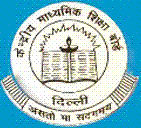CBSE (Central Board of Secondary Education)
The Central Board of Secondary Education is an eminent board of school education in India. The CBSE prepares the syllabus for Class 9 to Class 12 in schools affiliated with it.
It conducts two major examinations every year, the All India Secondary School Examination (AISSE) for Class 10 and the All India Senior School Certificate Examination (AISSCE) for Class 12, which is a school-leaving examination. Many private schools within and outside India are affiliated to CBSE. The medium for education prescribed by CBSE is either English or Hindi.
The CBSE also conducts the All India Engineering Entrance Examination (AIEEE) which is a common entrance examination conducted on all-India basis for admission to engineering and architecture/planning programmes in the country. Similarly Pre-medical and Pre-dental Tests AIPMT (PMT/PDT) are conducted for medical and dental colleges
Historical background
The "United Provinces Board of High School and Intermediate Education" was the first Board set up in 1921 with jurisdictions over Rajputana, Central India and Gwalior. The Government of India in 1929 suggested to set up a joint Board to expand the jurisdiction and renamed it the "Board of High School and Intermediate Education, Rajputana", which included Ajmer-Merwara.
In 1952, as a result of the growth of State Universities and State Boards all over India, the constitution of Board was amended wherein its jurisdiction was extended to part-C and part-D territories and the Board was given its present name "Central Board of Secondary Education", it was in the year 1962 finally that the Board was reconstituted.
Schools
There are a total of 9,689 schools from India and outside India affiliated to CBSE. As a result of the reconstruction, the Delhi Board of Secondary Education was merged with the Central Board and all the educational institutions recognised by the Delhi Board also became a part of the Central Board. The Board has grown from a group of 309 schools in 1962 to 5119 schools as on 25.9.98, which include 784 kendriya Vidyalayas, 1381 Government Schools, 2486 Independent Schools, 355 Jawahar Navodaya Vidyalayas and 13 Adhoc Schools. There are also Indian schools in the Middle East and Southeast Asia that are affiliated to it.
Examinations and results
CBSE examinations for classes X and XII are conducted in the month of March and the first week of April. The results are declared in the last week of May mostly in 2-3 phases.
Regional Offices of the Board
In order to execute its functions effectively and maintain the educational standards, the Board has decentralised its administration. As a result, Regional Offices have been set up in different parts of the country to be more responsive to the affiliated schools. The Board has regional Offices in Ajmer, Allahabad, Guwahati, Chennai, Delhi, Panchkula and Patna. Their jurisdictions are:
|
Regional Office |
Jurisdiction |
|
Ajmer |
Gujarat, Rajasthan, Madhya Pradesh, Dadra and Nagar Haveli and Chattisgarh |
|
Allahabad |
Uttar Pradesh, Uttarakhand, Orissa and West Bengal |
|
Chennai |
Andaman and Nicobar Islands, Andhra Pradesh, Daman and Diu, Karnataka, Kerala, Maharashtra, Puducherry and Tamil Nadu |
|
Guwahati |
Asom, Nagaland, Manipur, Meghalaya, Tripura, Sikkim, Arunachal Pradesh and Mizoram |
|
Panchkula |
Haryana, Punjab, Jammu and Kashmir, Himachal Pradesh and UT of Chandigarh |
|
Patna |
Bihar and Jharkhand |
|
Delhi |
NCT of Delhi and the schools located outside India |
